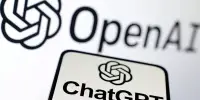While there have been many advances in digital security in recent years, it is important to note that perfect security in digital communications is not yet possible. However, there have been new breakthroughs in the development of more secure encryption techniques that make it increasingly difficult for unauthorized individuals to access confidential information.
For the first time, researchers have made a breakthrough that allows ‘perfectly secure’ hidden communications. The method employs new advances in information theory methods to conceal one piece of content inside another in an undetectable manner. This could have significant implications for information security, in addition to additional applications in data compression and storage.
A group of researchers has made a breakthrough in secure communications by developing an algorithm that conceals sensitive information so well that it is impossible to detect that it has been hidden.
The team, led by the University of Oxford in close collaboration with Carnegie Mellon University, anticipates that this method will be widely used in digital human communications, such as social media and private messaging, in the near future. The ability to send completely secure information, in particular, may empower vulnerable groups such as dissidents, investigative journalists, and humanitarian aid workers.
Our method can be applied to any software that automatically generates content, such as probabilistic video filters or meme generators. However, users should exercise caution because any encryption technique may be vulnerable to side-channel attacks, such as detecting a steganography app on the user’s phone.
Dr. Christian Schroeder de Witt
The algorithm is used in the context of steganography, which is the practice of concealing sensitive information within seemingly innocuous content. Steganography differs from cryptography in that sensitive information is concealed in such a way that the fact that something has been hidden is obscured. A Shakespeare poem, for example, could be hidden inside an AI-generated image of a cat.
Despite being studied for over 25 years, existing steganography approaches are generally insecure, which means that individuals who use these methods risk being detected. This is due to the fact that previous steganography algorithms would subtly alter the distribution of innocuous content.
To overcome this, the researchers used recent advances in information theory, specifically minimum entropy coupling, which allows two data distributions to be joined together so that their mutual information is maximized while the individual distributions are preserved.
As a result, there is no statistical difference between the distribution of innocuous content and the distribution of sensitive information using the new algorithm.

The algorithm was tested using several types of models that produce auto-generated content, such as GPT-2, an open-source language model, and WAVE-RNN, a text-to-speech converter. Besides being perfectly secure, the new algorithm showed up to 40% higher encoding efficiency than previous steganography methods across a variety of applications, enabling more information to be concealed within a given amount of data. This may make steganography an attractive method even if perfect security is not required, due to the benefits for data compression and storage.
The research team has filed a patent for the algorithm, but intends to make it available to third parties under a free license for non-commercial responsible use. This includes academic and humanitarian applications, as well as third-party security audits. This work has been published as a preprint paper on arXiv, and an inefficient implementation of their method has been open-sourced on Github. In addition, they will present the new algorithm in May at the premier AI conference, the 2023 International Conference on Learning Representations.
AI-generated content is becoming more common in everyday human communications, thanks to products like ChatGPT, Snapchat AI-stickers, and TikTok video filters. As a result, steganography may become more common as the presence of AI-generated content no longer raises suspicion.
‘Our method can be applied to any software that automatically generates content, such as probabilistic video filters or meme generators,’ said co-lead author Dr. Christian Schroeder de Witt (Department of Engineering Science, University of Oxford). This could be extremely useful for journalists and aid workers in countries where encryption is illegal. However, users should exercise caution because any encryption technique may be vulnerable to side-channel attacks, such as detecting a steganography app on the user’s phone.’
‘The main contribution of the work is showing a deep connection between a problem called minimum entropy coupling and perfectly secure steganography,’ says co-lead author Samuel Sokota (Machine Learning Department, Carnegie Mellon University). By leveraging this connection, we introduce a new family of steganography algorithms that have perfect security guarantees.’
















